
“If you have love and compassion towards all,
then you are being religious in the highest
sense of the word, because you are expressing
the Great Spirit in your life.”
Miyoshi
This spiritual post is about someone so special that he is called “Prince among men, a man in a million”, who is revered in a way no one else is in today’s India. His influence in his days was so profound that those who met him were instantly captivated by his magnetic and complex personality, his vast knowledge of virtually anything and everything, his wisdom, his ability to speak on any subject without preparation and anywhere, and his legendary, unique memory. He was one of the greatest thinkers of all time, and to get the right perspective and to be able to write about him, I studied all 8 volumes of his work and was greatly impressed by his ideas, his thoughts, and his passionate beliefs. I hope that my writing about him will do him justice.
This is the life story of Swami Vivekananda, The Greatest Prophet of Modern India.
SWAMI VIVEKANANDA
12 January 1863 – 4 July 1902

Swami Vivekananda’s original name was Narendranath Dutta. His wealthy family’s ancestral home was on Gour Mohan Mukherjee Lane, Simla Street in north Calcutta (Kolkata). His mother was a devout woman who worshipped Lord Vireshwar, Shiva of the brave heart, whose temple was situated at Varanasi. As she didn’t live there, she asked one of her old aunts to pray daily at the temple, and she would pray at home. She had already lost her first two children and the next three were girls and she wanted to have a son to carry the family line.
Kashi Vishwanath Temple in Varanasi, one of many temples devoted to Lord Shiva

Varanasi
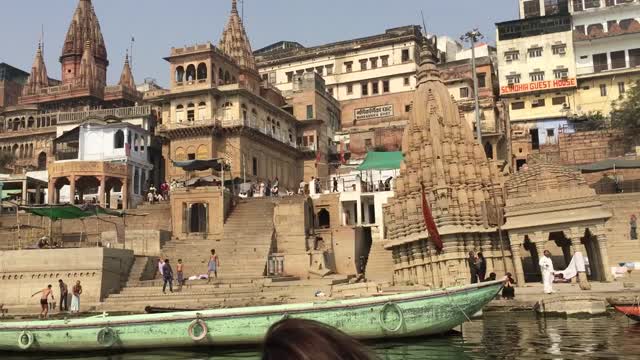
Her devotion and practising of special austerities paid off, as one night she had a vivid dream where she saw Lord Shiva rouse Himself from meditation and take the form of a small child who was to be born to her as a son. Shortly after, on 12th January 1863, she bore a son. It was the Brahma-muhurta, exactly 33 minutes and 33 seconds after six, a few minutes before sunrise. At the time of birth, the constellation Sagittarius was rising in the east, the moon was in the constellation Virgo, the planet Jupiter was in the eleventh house, and Saturn was in the tenth house from that of his birth. It was the seventh day of the ninth Bengali month Poush, and happened to be the day of the Makar Sankranti, a great Hindu festival, shown below.
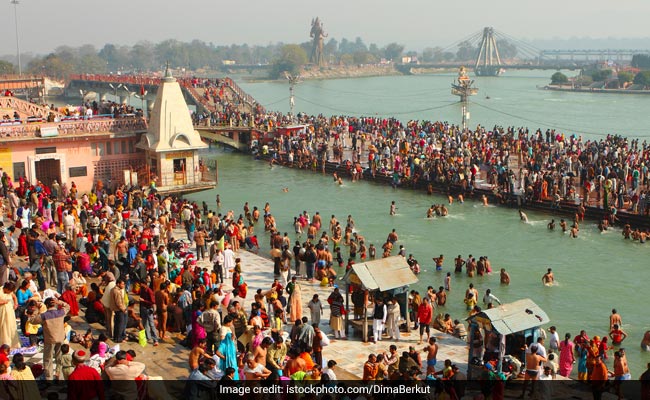
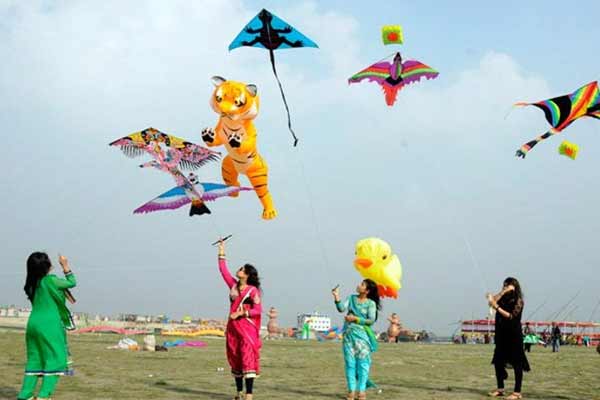
As all over India millions of people were celebrating, they didn’t know that a baby was born that would become a symbol of new glory for the country, galvanise the spiritual and national consciousness of India, who would spread Lord Shiva’s message and carry on his work.
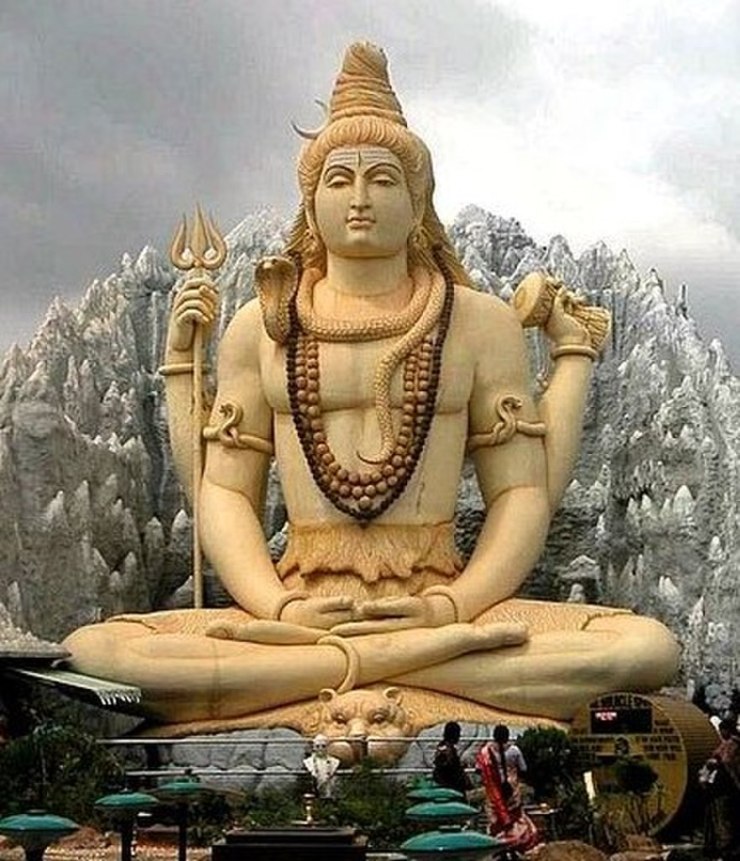
The child was called Narendranath, shorten to Naren. As a little boy, Naren was eager to learn and would listen to daily readings of Ramayana and Mahabharata. He thought about the glory of all the gods and goddesses in Hindu beliefs and listened attentively to Bhagavad Gita and the Vaishnav stories. The Bengali alphabet and English were taught and he was soon proficient in both. Seeing the boy’s exceptional intelligence and his hunger to learn, the whole family contributed to Naren’s education. One of the old relatives, Nrisimha Dutta, was very learned in Sanskrit lore and its grammar Mugdhabodha, and the genealogy of his family, and she would teach him hymns to gods and goddesses, as well as whole passages from Ramayana and Mahabharata.
A scene from the Mahabharata
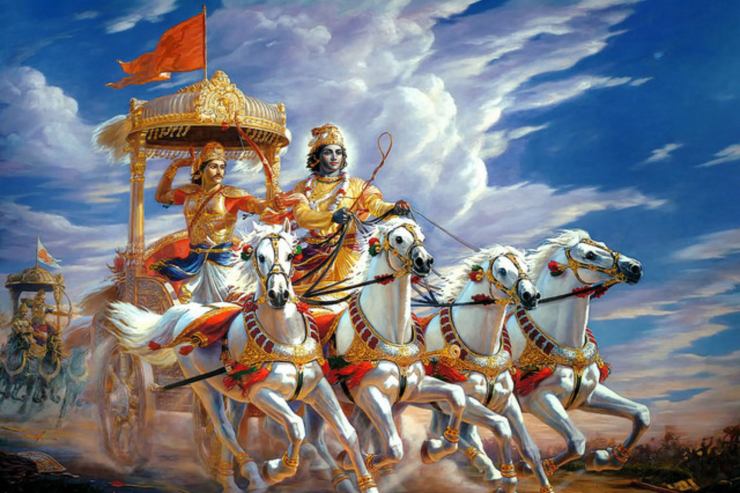
Naren’s father made sure that he learned music and singing which helped Naren to become an accomplished singer later in life. His spiritual life had undergone a change too. This is an interesting story as it highlights very early in Naren’s life his subconscious monastic leanings, and his insistence on strict observance of brahmacharya (celibacy) by his disciples. His early worship was directed at Sita-Rama until he discovered that they were married. While crying, he asked his mother what to do; she addressed him not as Naren but Vireshwar and told him to worship Shiva instead. He threw the image of Sita-Rama out of the window and it was smashed to pieces. The next day he and his mother bought the image of Shiva and he was meditating in front of the deity, which was awakening deep spiritual emotions in him.
An image of Sita-Rama

At this time he started to experience a strange vision. Every night as he lay in his bed, he could visualise a spot of light between his eyebrows and would see the light changing its colour, radiance, shape, and bursting and illuminating his whole body in a flood of white radiance. Later in life, the only other person who experienced the same sensation was his spiritual teacher, Sri Ramakrishna. This vision remained with him for life, although not as frequent or intense. His biographer observed: “Such a happening definitely spoke of a great spiritual past in which the soul had learned to sink itself deep in meditation so well that the meditative state had become spontaneous with it.”
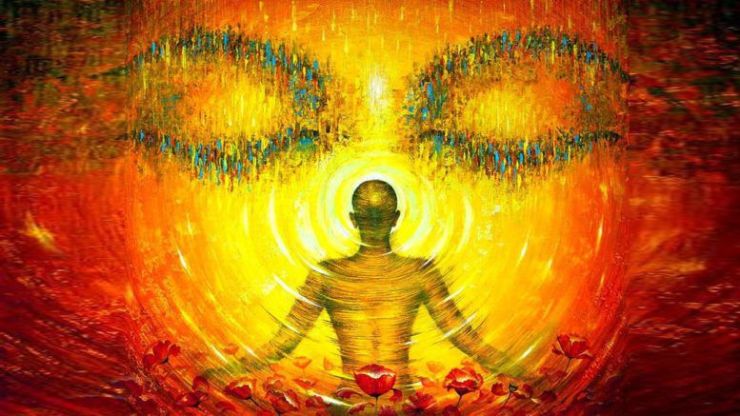
When Naren was going for the first time to school, pathshala, the traditional Indian primary school, he was appropriately attired in a brand-new dhoti, from his waist hanging a little reed-pen attached on a long string. The family priest conducted the traditional ceremony that is performed when a boy is going to school for the first time, with all the family present, all chanting the prayers to Sarasvati – the goddess of learning. The priest then gave Naren red-tinged chalk called Ram-khadi and proceed to guide the boy’s hand in writing on the ground the Bengali alphabets, pronouncing each letter as it was written.
The goddess Sarasvati

Part of the Bengali alphabet

The school days didn’t last long because within a few days his parents had taken him off and engaged private tutors because they disapproved of the other children’s language. The exceptional memory of Naren became obvious to the new teachers as shown by the following anecdote. When one of them thought that the boy, lying with his eyes closed, was asleep and shook him, Naren opened his eyes and without prompting recited word for word a long text which the teacher had been reading out. The teacher’s admiration was beyond words because he never met anyone so prodigiously gifted with memory.
Samrat Ashoka, the King of Kings
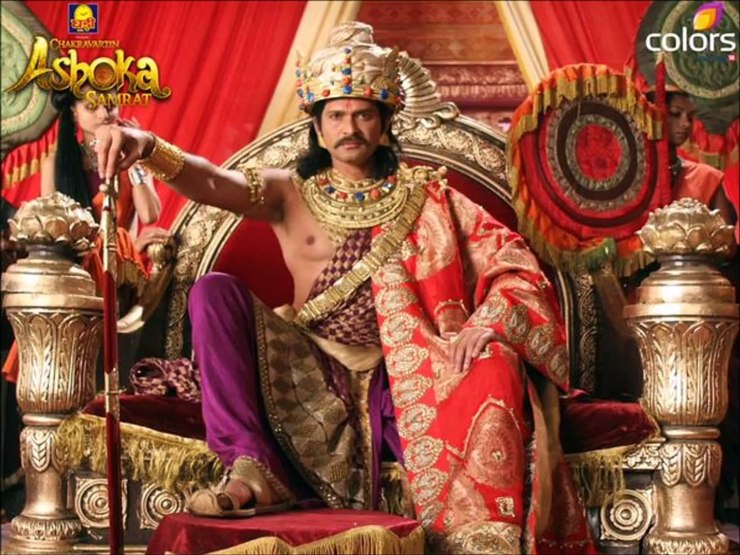
From an early age, Naren always assumed leadership among his playmates and would proclaim: “I am the Samrat, the King of Kings”, and the children would play his favourite game, ‘The King and the Court’. In India, only the Samrāṭ/Chakravartin can perform the Rajasuya sacrifice. Another significant incident happened when Naren, whose best friend at the time was a coachman, puzzled at the very pronounced at the time caste system, entered the smoking room where the various hookahs were placed for different caste people to smoke, and took a whiff from each and every one. When asked by his father what he was doing, Naren exclaimed, “Oh, father! Why, I was trying to see what would happen if I broke caste! Nothing has happened!” Reading this, I knew that he was and would grow up to be an exceptionally intelligent man. And I wanted to read his works.
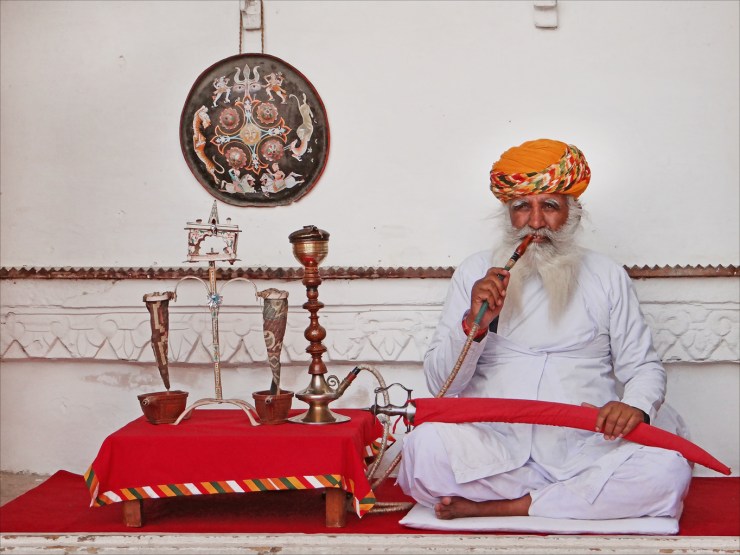
In 1872, Naren was admitted to the English section of Pandit Ishvar Chandra Vidyasagar’s Metropolitan Institution, a famous school of the time. He studied English and mastered it to such an extent that his words and speeches in English have since become legendary. He was also a very active boy and participated in all games, boxing, cricket, rowing, fencing, and lathi.
Metropolitan Institution, Calcutta

From a very young age, he hated superstition, and never took anything at face value. This conviction remained with him throughout his life, and he even questioned his spiritual Master, Sri Ramakrishna’s claim to have seen god. He once declared, “Do not believe a thing because you read it in a book. Do not believe a thing another has said so. Find out the truth for yourself. That is realisation.” At the end of his studies, Naren passed with excellent results in English, History, and Sanskrit. Like his father, he disliked mathematics. He had an aptitude for drawing and a melodious voice. Being funny and with a friendly and kind personality, Naren attracted everyone towards him. Truthfulness was the very backbone of his life, and he was never coarse or cruel.

When his father bought him a pony, he loved riding and was an excellent rider. In 1877, when Naren was fourteen years and in his third class, his father had to leave for Raipur where his business would keep him for two years. At that time, there was no transport between Calcutta (Kolkata) and Raipur; the journey took two weeks travelling in a bullock cart through the dense forests. Naren, who went with his father, loved the adventure. The wonder and the wild beauty of nature filled his heart with gratitude to the Creator of the World.


As there was no school in Raipur, Naren and his father held intellectual conversations on all manner of topics, as Viswanath believed that education was about stimulating the mind, and not superimposing ideas. They became very close. During the stay in Raipur, Naren mastered the game of chess and learned cooking to a high standard. On their return to Calcutta, it was arranged for Naren to be trained in classical music and instrumental music under the best ustads. Naren mastered playing pakhawaj, tabla, esraj, and the sitar. His vocal music was very good too. He sang in such a beautiful voice that his family wanted to hear him singing and he would entertain them, but especially his father. Sometimes neighbours would gather outside listening to hymns that he sang.

Playing the tabla

It was in the General Assembly’s Institution that Naren first heard about Sri Ramakrishna when the Principal of the Institution, the noted scholar Professor William Hastie, was explaining the meaning of trance as in Wordsworth’s “Excursion”. He referred to Sri Ramakrishna Paramahamsa of Dakshineswar. Later that year, they met.
Professor William Hastie

After two years of absence from school, Naren had a few obstacles to overcome but by working very hard he passed the Bachelor of Arts examination in 1894. To the previous subjects, he added Logic and Psychology with Philosophy. His mind became intensely analytical and he developed his own style of intellectual pursuit. Under the guidance of his philanthropist father, he was a natural idealist and a fervent seeker of truth.
Music was another way of praying for Naren and his acquired knowledge made him a theoretician of music. In a treatise in Bengali entitled “Sangit-Kalpataru”, which was published in 1857, he wrote about the science and art of vocal and instrumental music. Also, he wrote a masterly introduction to the book “Sangit-Sangraha”, a compilation of devotional and inspirational songs and hymns that are still sung at Ramakrishna Mission, one of whose buildings shown below.
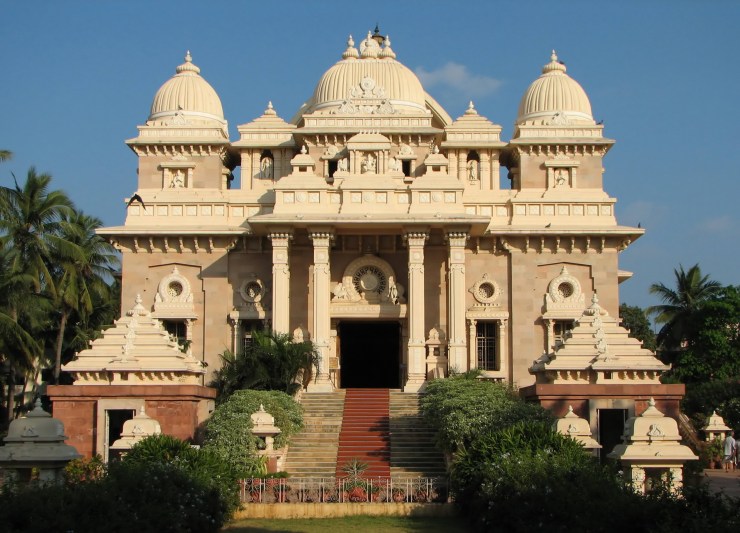
At the time, India was awakening politically and towards liberalisation. The movement initiated by Keshab Chandra Sen, and inspired by Raja Ram Mohun Roy, attracted Naren’s attention, and he participated in the Brahmo Samaj meetings. When the organisation split in 1878, he joined the Sadharan Brahmo Samaj, founded under the leadership of Pandit Shivnath Shastri and Vijay Krishna Goswami that year. Naren’s intense desire for justification of the means to an end made him identify himself with anything that established equality and promised liberation from obsolete methods.
In December 1883, Naren joined a three-year law course at the then Metropolitan Institution which is now known as Vidyasagar College. On his father’s suggestion, at 21 years old he became a Freemason.

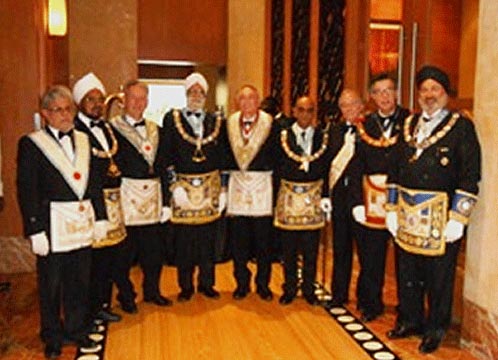
Having met Sri Ramakrishna once, Naren went to see him at Dakshineswar. He became his disciple shortly after, as he was impressed by him immensely. The discussions about the existence of God resulted in Naren being initiated by his master to perceive God as “Existence-Knowledge-Bliss”, Sat-Chit-Anand.
The idol of Goddess Bhavatarini at Dakshineswar
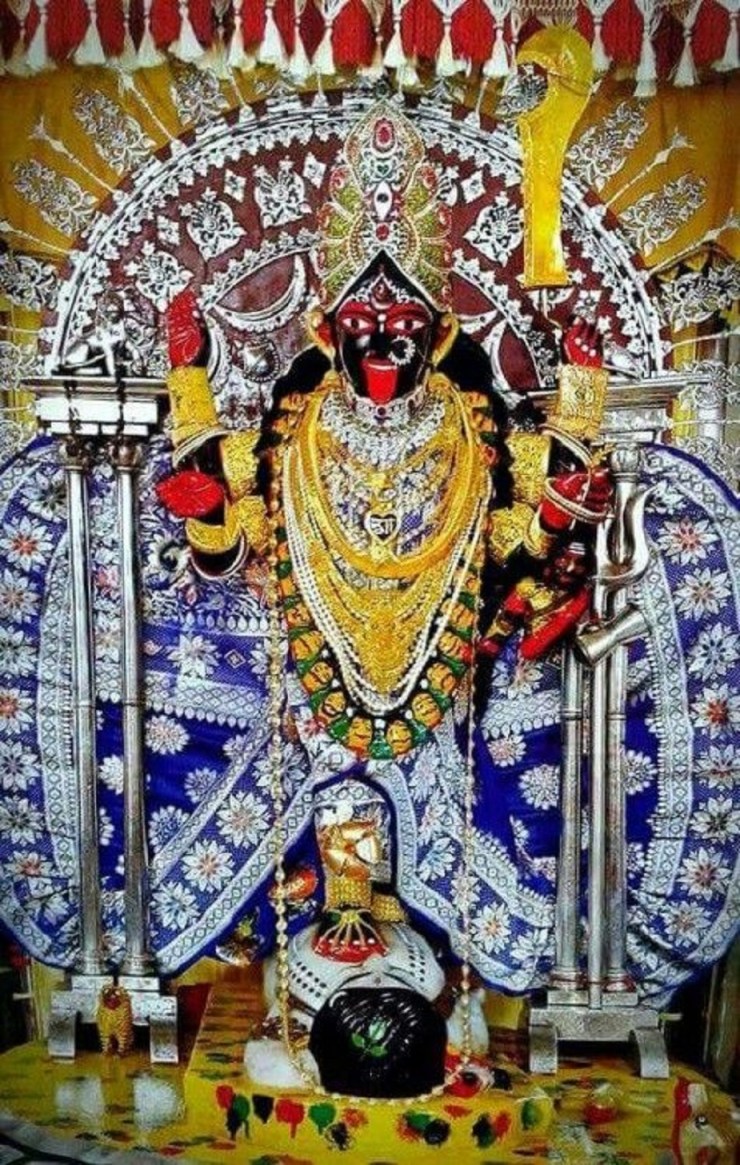
Sri Ramakrishna was devoted to the spiritualism and ascetism of the teachings from Upanishads, not trusting the modern time’s convictions. Naren’s contact and influence by Sri Ramakrishna, and the subsequent happenings had transformed him from Narendranath to Swami Vivekananda – the Hindu monk who walked upon the path of righteousness for the salvation of his soul, and for the good of the world, which in Sanskrit stands for Atmano Mokshartham Jagadhitaya Cha.
Sri Ramakrishna
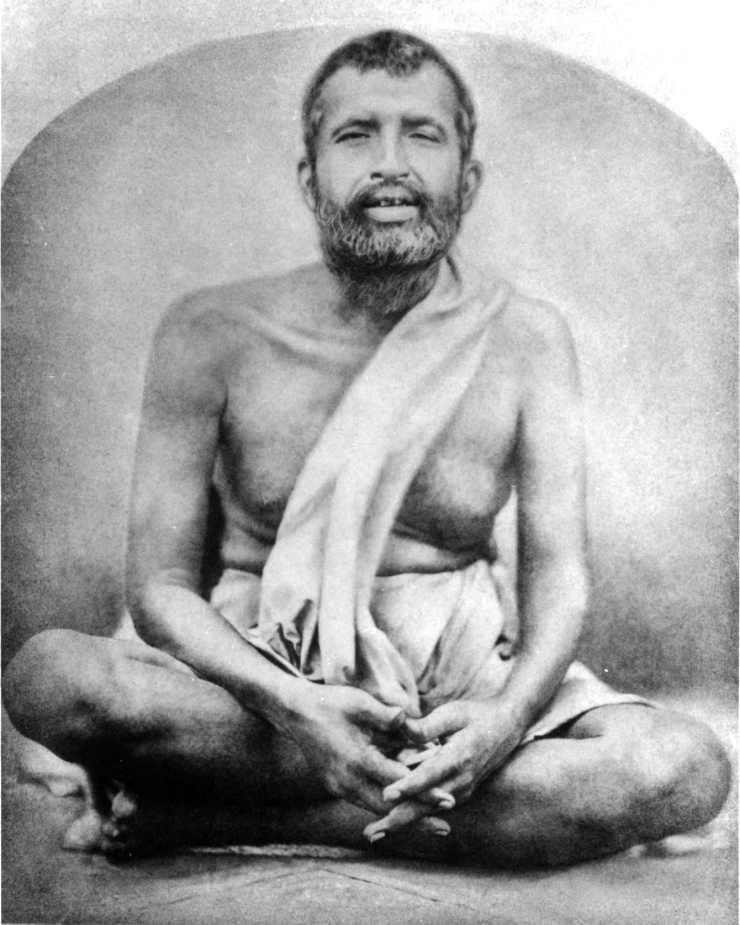
Sri Ramakrishna’s method of teaching was unique. He would teach through his body language, and through parables and songs, whose basis was that “when realisation comes into the heart, all arguments cease and divine knowledge shines forth.” Having actually seen the Truth of this universe, Sri Ramakrishna had little use for logic. The man who preached universal love and tolerance actually lived it too. Sincerity was the main theme of his teaching, and he would say, “Pray in any way, for the Lord hears even the footfall of an ant.” Sri Ramakrishna believed that human beings were the manifestation of God Himself and advocated ‘service to man’ as sheer worship of the Lord. The Hinduism that Sri Ramakrishna practised was a positive, practical, and living realisation.
Lord Shiva

Naren was strongly against the prevailing Hindu social system under the bondage of the priestly caste and found intolerable the social segregation on the basis of caste and creed. His heart bled for the millions of poor and distressed, yet he was convinced of the great future for the Indian race, in view of harmonising all religions in India. The Master transformed the questioning Naren into his most trusting and understanding disciple. Naren was apprised of the “existence, knowledge and Absolute Bliss’.
Old Calcutta
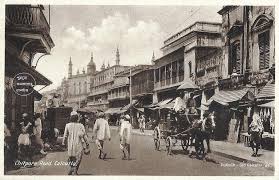
Around that time, the financial position of the Duttas deteriorated drastically, and as a result, Viswanath had to leave the ancestral home with his family, and move to a rented house at 7, Bhairav Biswas Lane, a place very close to Naren’s maternal grandmother’s house. Viswanath wanted Naren to marry, as is the Indian tradition, but Sri Ramakrishna was vehemently opposed to the idea. Somehow, every time there was some progress in the matter, some unforeseen difficulty would arise. At last, Naren’s father did succeed in finalising his marriage with the daughter of an influential and wealthy Bengali family of Calcutta, who promised a handsome dowry as well, but Naren refused to marry and the wedding had to be cancelled. At the same time, his father Viswanath died suddenly. Sri Ramakrishna saw Naren’s future as the saviour of souls and could not imagine him having a family.
Bhuvaneshwari Devi, Naren’s mother

When Naren’s father died suddenly on 25th February 1884, it changed Naren’s life dramatically. As the oldest son, he was now wholly responsible for the family of seven. It is in such circumstances that the benefit of education came to the fore. He gave up his articleship and taught at the Metropolitan Institution, where he became the headmaster in June 1886. While working, he was preparing himself to at some point to renounce the world. He was in contact with Sri Ramakrishna and they discussed his plans and how to resolve his financial obligation to his family. Finally, Sri Ramakrishna asked Naren to stay while he was still alive and promised that Naren’s family would be always looked after.
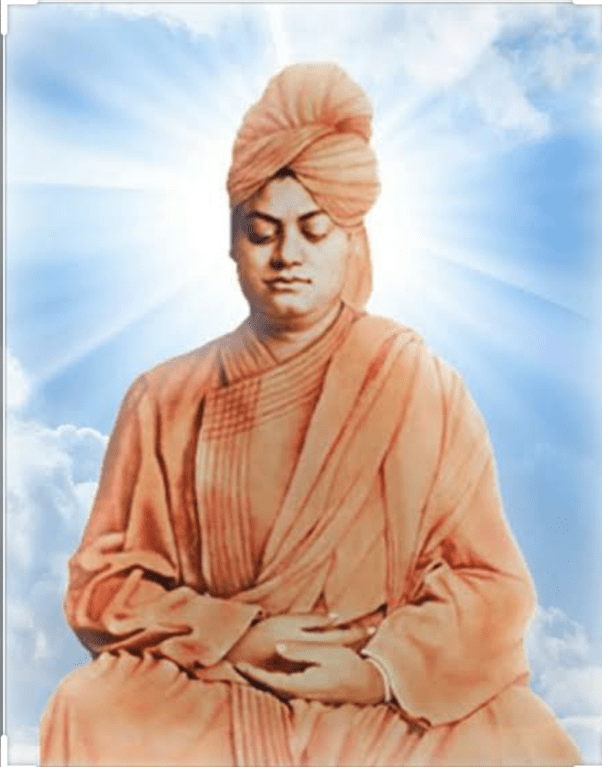
In the next few years, Sri Ramakrishna transformed the questioning Naren into his most trusting and understanding disciple. Naren was apprised of the “existence, knowledge and Absolute Bliss” of Sachchidananda, and assured that there could never be any excess in one’s love for God, and therefore, there was no harm in intense meditation. So Naren, who until then sang only those songs that praised the formless Brahma, now would sing those that brought about the intense spiritual love of Radha. Naren’s education from his Master continued throughout the five years they were together, until Sri Ramakrishna’s death. All his twelve disciples adopted new names and Naren became Swami Vivekananda in February 1891.
The goddess Radha, consort of Krishna
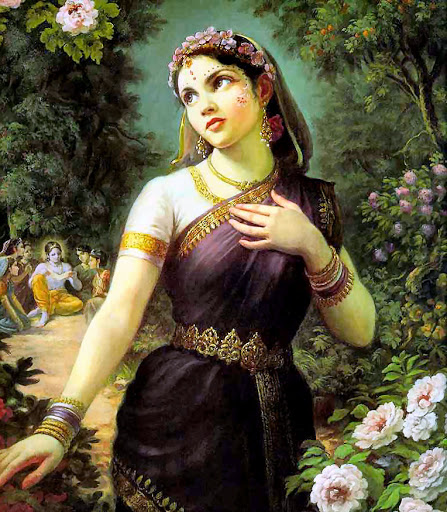
Within six weeks of Sri Ramakrishna’s death, a very expansive, old house was found and turned into a monastery dedicated to Sri Ramakrishna. It was situated near the Ganga and the peace and solitude of the area provided a perfect environment for meditation. Swami stayed for a while with the other disciples who regarded him as Master, but he believed that a sanyasi could not be tied to one place, and he began to feel that the monastery was like a shackle which was preventing his progress in the realisation of God. He resolved to break away from it and wander into the unknown realm of humanity.
The first monastery dedicated to Ramakrishna at Baranagar; the first image shows the dilapidated building acquired, the second shows the renovated house.


For the next few years, Swami would wander across India, visiting many towns, cities, and even remote villages, praying, giving speeches, and everywhere people would crowd together to listen to him as his knowledge and exceptional intelligence were immediately apparent. At Varanasi, the home of monks, the centre of learning, and the seat of Lord Shiva, Swami met many scholars and sanyasis and exchanged ideas with them. The sacred Ganges, the praying votaries, the atmosphere of holiness, the temples of Viswanath and Annapurna, the knowledge that both Buddha and Shankaracharya had preached there, made vivid impressions on him. He also visited nearby Sarnath, where Buddha had preached his first sermons. It isn’t possible to describe in this post all and every place that Swami visited, people he met, and wonders, like the Taj Mahal, he had seen. If I am asked, I could make a post about Swami wandering across India.
Images of Sarnath
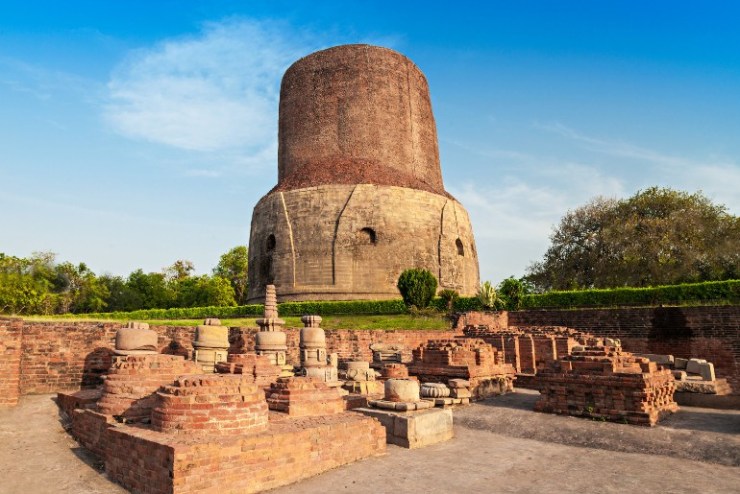
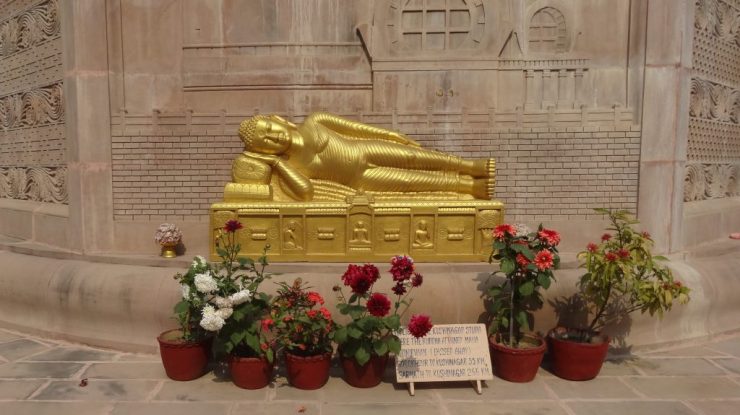
In his final few days before leaving for America, Swami was dressed in silk robes and a turban from the best shops in Bombay by his devotees, and a first-class steamer ticket was bought for him. On 31st of May 1893, Swami boarded the steamer Peninsular. He was dressed in his newly-bought finery, and the farewells, uncertainties and formalities of foreign travel bogged him down as much as the many belongings he had to care for. He stood on the deck of the ship as long as the motherland was visible to him, and sent out his blessings to all those who loved him and all whom he loved. His eyes filled with tears, and he was overwhelmed with emotions as he thought of the Master, of the Holy Mother, of his disciples, of India and her culture, of her greatness and her suffering, of the rishis and of Sanatana Dharma.
P&O SS Peninsular shown on a postcard

Swami was deeply touched by the widespread ignorance, misery, and squalor of the common Indian and felt a “fierce desire to change such evil conditions.” He sincerely believed in karma relieving the sufferings of his countrymen and reaching God through service to the starving multitudes. He replied to the criticism of his choosing to stay mainly with princes and their dewans by saying, “If I can win over to my cause those in whose power are wealth and the administration of the affairs of thousands, my mission will be accomplished sooner; by influencing one Maharaja alone I can indirectly benefit thousands of people.” His whole heart and soul was the burning epic for India, and his great mind could visualise a connection where others only saw isolated facts. He was the most universal mind and he was the one who realised “that India will be raised not with the power of the flesh, but with the power of the spirit; not with the power of destruction, but with the flag of peace and love.” When I wrote “India – Empire of the Spirit”, I didn’t even know about the existence of Swami Vivekananda and my intuitive connection with his thoughts well illustrates the mysteries of the world or even the universe.
Reclining Buddha statue at the entrance to the Seema Malaka Temple in Colombo, Sri Lanka

The journey across the ocean, the freshness of the sea air, the friendly atmosphere on the ship, with nothing to do but enjoy oneself, improved Swami’s mood. The first stop was Colombo, where the ship was anchored for a day. Swami went out to see the city and was impressed by the giant statue of the reclining Buddha. The next stop was Penang in the Malay Peninsula, with a mainly Muslim population.
Penang

Singapore was the next stop, which was then the capital of the Straits Settlements. Here, Swami visited the museum and the Botanic Gardens, shown below.
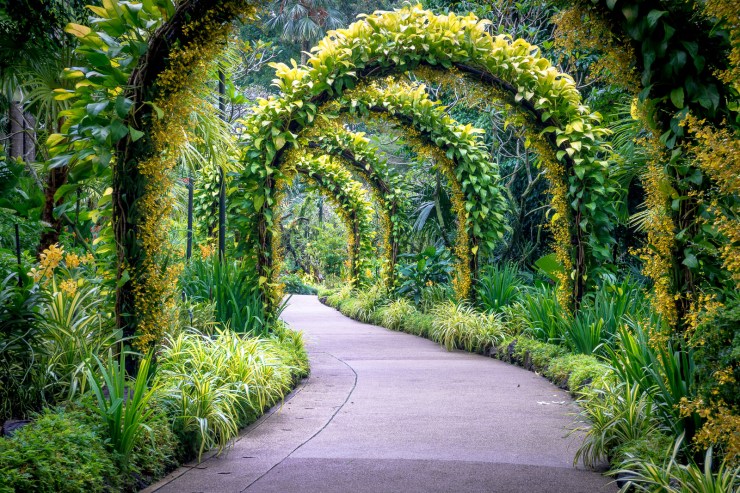

When the ship reached Hong Kong, Swami discovered the adeptness of Chinese people in commercial activities. By watching the lifestyle of the boat people and the Si-Kiang river, during a boat ride to Canton some eighty miles away, he could easily see the similarities between the Chinese and the Indian and realised that it was poverty that was the bonding factor.
A Hong Kong market

In Canton, Swami visited several Buddhist temples, and was surprised to find that Chinese women were as much a victim of the zenana system as North Indian women. The ship was anchored in Hong Kong for three days, after which it sailed for Nagasaki in Japan, where Swami found Japanese people to be one of the cleanest in the world.

To learn more about the country that he thought interesting, he disembarked at Kobe and took a land route to Yokohama. En route, he visited the industrial town of Osaka, the former capital Kyoto and the present capital Tokyo.
Kyoto, Japan

Tokyo, Japan

In all three cities, he visited their important temples, and studied the Japanese rituals, ceremonies, and customs.
The Japanese tea ceremony

In some of the temples, he noticed that like in China, on the inner walls, there were inscriptions of Sanskrit scriptures in old Bengali characters. He thought that the only logical explanation would be that some Bengali bhikkhus, or Buddhist monks, must have visited Japan and China to spread Buddhism in those two countries.
Sanksrit inscriptions on a temple wall
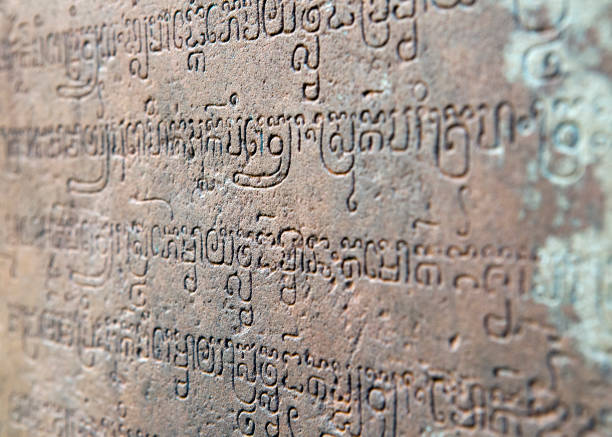
On 14th July Swami left Yokohama for Vancouver on a bigger ship, the Empress of India, and reached British Colombia on the evening of 25th July.
The Empress of India

From there he took the Canadian Pacific Railway to Chicago. It took him almost five days to reach his destination through Canada and the American states of Minnesota and Wisconsin, arriving in Chicago on 30th July 1893. The station didn’t impress him and to be on the safe side he checked in to one of the biggest hotels in Chicago.
A Canadian Pacific Railway train

The Parliament of Religion was still three months away but the World Fair was already on and all the latest inventions and arts were exhibited there. Swami marvelled at the human brain behind them. Learning that Boston was a much cheaper place to live, he decided to stay there for a time. On the train to Boston, he met Katherine Abbott Sanborn, a lecturer, and author who was so impressed with Swami and his erudition that she invited him to stay with her as a guest. She had a large circle of friends and through her, Swami met Dr. John Henry Wright, a professor of Greek at Harvard University. The vastly learned professor was highly impressed by Vivekanada’s depth of knowledge and he insisted that he represent Hinduism at the Parliament of Religions. When Swami told him that he had no credentials with him, the professor replied, “To ask you, Swami, for credentials is like asking the sun to state its right to shine.” He wrote a letter to the Charman of the Committee for Selection of Delegates, stating, “Here is a man who is more learned than all our learned professors put together.” He also provided Swami with the money for his expenses in Chicago.
Katherine Abbot Sanborn and John Henry Wright


This was a godsend and Swami rejoiced but before returning to Chicago, he addressed several Massachusetts gatherings and he spoke about Indian culture, the Hindu Dharma, and India’s needs. On the invitation of the brother of his Boston host, Katherine, Swami journeyed to New York to speak three times at the American Social Science Association. He returned to Chicago in September and the Parliament of World’s Religions was held from 11th to 27th September 1893. On the morning of the opening of the Parliament, the delegates assembled at the Art Institute, from where they were taken in a grand procession inside the Hall of Columbus that was packed beyond its capacity. After the initial ceremonies were over, the delegates were introduced one by one and they went up to the podium and spoke. Swami Vivekananda’s position in the numerical order was 31, but he asked the President to speak the last. His heart was fluttering, and his tongue nearly dried up, and he prayed to Devi Sarasvati, the goddess of learning, and stepped up when Dr. Barrows introduced him; the rest is history.
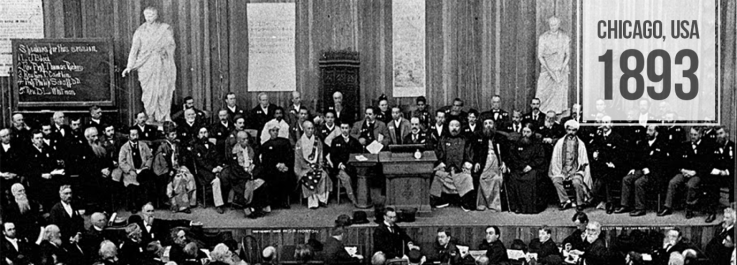
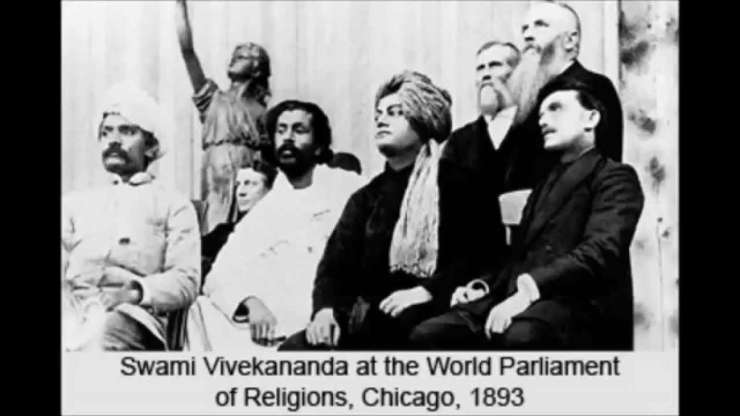
The moment he addressed the gathering as “Sisters and Brothers of America”, he received a thundering standing ovation that lasted for a full two minutes from the seven thousand odd people who had gathered there that day. When silence was restored, he began his short speech by thanking the youngest of nations on behalf of the most ancient order of monks in the world, the Vedic Order of sanyasis, and introduced Hinduism as “the Mother of Religions, a religion which has taught the world both tolerance and universal acceptance.”
Here’s the complete text of Swami Vivekananda’s historical speech in Chicago’s Parliament of World’s Religions.
Sisters and Brothers of America,
It fills my heart with joy unspeakable to rise in response to the warm and cordial welcome which you have given us. I thank you in the name of the most ancient order of monks in the world; I thank you in the name of the mother of religions, and I thank you in the name of millions and millions of Hindu people of all classes and sects.
My thanks, also, to some of the speakers on this platform who, referring to the delegates from the Orient, have told you that these men from far-off nations may well claim the honor of bearing to different lands the idea of toleration. I am proud to belong to a religion which has taught the world both tolerance and universal acceptance.
We believe not only in universal toleration, but we accept all religions as true. I am proud to belong to a nation which has sheltered the persecuted and the refugees of all religions and all nations of the earth. I am proud to tell you that we have gathered in our bosom the purest remnant of the Israelites, who came to Southern India and took refuge with us in the very year in which their holy temple was shattered to pieces by Roman tyranny. I am proud to belong to the religion which has sheltered and is still fostering the remnant of the grand Zoroastrian nation. I will quote to you, brethren, a few lines from a hymn which I remember to have repeated from my earliest boyhood, which is every day repeated by millions of human beings: “As the different streams having their sources in different paths which men take through different tendencies, various though they appear, crooked or straight, all lead to Thee.”
The present convention, which is one of the most august assemblies ever held, is in itself a vindication, a declaration to the world of the wonderful doctrine preached in the Gita: “Whosoever comes to Me, through whatsoever form, I reach him; all men are struggling through paths which in the end lead to me.” Sectarianism, bigotry, and its horrible descendant, fanaticism, have long possessed this beautiful earth.
They have filled the earth with violence, drenched it often and often with human blood, destroyed civilization and sent whole nations to despair. Had it not been for these horrible demons, human society would be far more advanced than it is now. But their time is come; and I fervently hope that the bell that tolled this morning in honor of this convention may be the death-knell of all fanaticism, of all persecutions with the sword or with the pen, and of all uncharitable feelings between persons wending their way to the same goal.
Concluding Address — Chicago, September 27, 1893
The World’s Parliament of Religions has become an accomplished fact, and the merciful Father has helped those who labored to bring it into existence, and crowned with success their most unselfish labor.My thanks to those noble souls whose large hearts and love of truth first dreamed this wonderful dream and then realized it. My thanks to the shower of liberal sentiments that has overflowed this platform. My thanks to this enlightened audience for their uniform kindness to me and for their appreciation of every thought that tends to smooth the friction of religions. A few jarring notes were heard from time to time in this harmony. My special thanks to them, for they have, by their striking contrast, made general harmony the sweeter.
Much has been said of the common ground of religious unity. I am not going just now to venture my own theory. But if any one here hopes that this unity will come by the triumph of any one of the religions and the destruction of the others, to him I say, “Brother, yours is an impossible hope.” Do I wish that the Christian would become Hindu? God forbid. Do I wish that the Hindu or Buddhist would become Christian? God forbid.
The seed is put in the ground, and earth and air and water are placed around it. Does the seed become the earth, or the air, or the water? No. It becomes a plant. It develops after the law of its own growth, assimilates the air, the earth, and the water, converts them into plant substance, and grows into a plant.
Similar is the case with religion. The Christian is not to become a Hindu or a Buddhist, nor a Hindu or a Buddhist to become a Christian. But each must assimilate the spirit of the others and yet preserve his individuality and grow according to his own law of growth.
If the Parliament of Religions has shown anything to the world, it is this: It has proved to the world that holiness, purity and charity are not the exclusive possessions of any church in the world, and that every system has produced men and women of the most exalted character.
In the face of this evidence, if anybody dreams of the exclusive survival of his own religion and the destruction of the others, I pity him from the bottom of my heart, and point out to him that upon the banner of every religion will soon be written in spite of resistance: “Help and not fight,” “Assimilation and not Destruction,” “Harmony and Peace and not Dissension.”
The essence of Swami’s message was Universal Religion, and while emphatically declaring that no religion is either superior or inferior to the other, he quoted from the Hindu scriptures and said “As the different streams having their sources in different places all mingle their water in the sea, so, O Lord, the different paths which men take, all lead to Thee.”
The next year Swami, by now famous around the world, toured eastern America. Sometimes, he was giving fourteen lectures a week. He also was lecturing on Karma Yoga. The word Karma is derived from the Sanskrit “kri,” to do, and it means action. Swami lectured on Karma Yoga, Bhakti Yoga, Raja Yoga, and Gyan Yoga. Swami’s essays on the differences between different Yogas are very interesting, and I only wish I could include all of them here and many other topics that would interest my readers as much as they were applauded by so many American, French, Swiss and English devotees of Swami. The electrical engineer Nikola Tesla even thought that he could prove mathematically Swami’s rational theories of the Kalpas time cycles, prana (life), Akash (ether), as described in the Sankhya philosophy and which could be applied by modern science to solve many a cosmological problem.
Swami Vivekananda and Nikola Tesla

Swami’s last lecture in England was on Advaita Vedanta in 1896. A few days later, he left Italy. There he visited Milan, Pisa, Florence, and Rome, en route to Naples where he was going to board the ship Prinz Regent Luitpoid, heading for home, India. He had plans to build more monasteries, helping the poor through the Ramakrishna Order. When visiting the famous Italian cities he saw the galleries, cathedrals, and museums.
Florence, Italy

The Trevi Fountain in Rome, Italy

Finally, he sailed for India, and on 15 January 1897, his ship docked in Colombo, where he stayed for four days being feted like a king. In fact, Swami was greeted enthusiastically everywhere, with huge crowds waiting along his travelling road. The next four years he travelled across India, giving lectures and speeches to huge crowds, sometimes 60,000, and their shouting would drown out his voice. At that time his health deteriorated and he realised that he would not live over his fortieth birthday. His American and English disciples joined him in India. Towards the end of his life, Swami developed an acute form of asthma, that almost suffocated him one day. He could not sleep. He was still working through his vast group of devotees, disciples, and volunteers. He observed that:
“Three things are necessary to make every man great, every nation great:
1) Conviction of the powers of goodness
2) Absence of jealousy and suspicion
3) Helping all who are trying to be and do good.”
Having recuperated enough, Swami travelled one last time to the West in 1900. On his return, after visiting many places, everywhere greeted with veneration and still working on many projects, his health started to deteriorate seriously and he retired to Ramakrishna’s first monastery. He had many pets at the Math and fed them every day. He milked the goats, took care of the monastery cows, sheep, ducks, and the antelope, and was very fond of his puppy “Bugha”. The dog was so lovely and loving that when he died, long after Swami’s death, the monks permitted his body to be interred in the Math grounds on the banks of the Ganga, and a pile of bricks still marks the burial place.
When Swami’s health deteriorated to the point that he had difficulty walking on swollen feet, on Friday, 4th July 1902, as evening set in, he withdrew to his room and sat in meditation facing the Ganga.
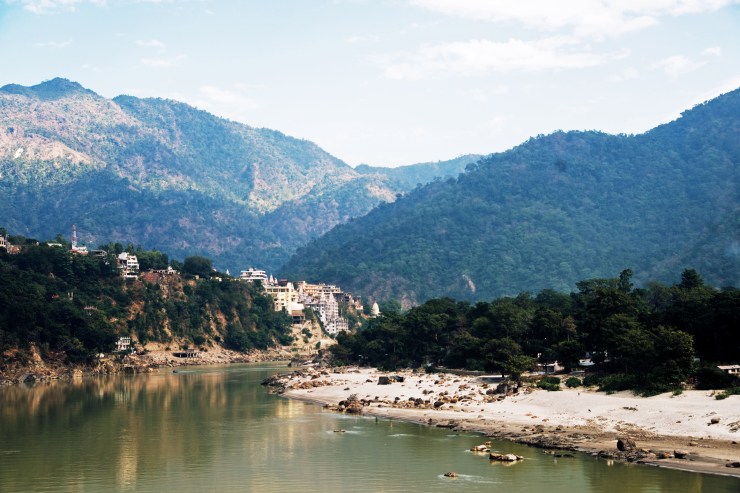
At around 8pm, he asked one of the monks to fan his head as he lay on his bed. After about an hour his hands trembled a little and he took a deep breath. Then all was quiet for about two minutes, when Swami again took a deep breath and his eyes became fixed in the centre of his eyebrows. Then a divine expression appeared on his face, indicating that it was all over. It was 9.10pm. The monks tried to bring back his consciousness by chanting the Master’s name. When there was no response, one of them felt Swami’s pulse; not finding it, he cried aloud.

Swami Vivekananda passed away at the age of thirty-nine years, five months, and twenty-two days, fulfilling a prophecy that he often repeated, “I shall never live to see forty.” The monks were dumbstruck and there was a pall of gloom over the Math. Telegraphic messages were sent to all centres across India and abroad. People started pouring in by ferry and road to pay their last respects to Swami, whose motionless body lay in the room that only two days earlier had been full of his sermons, stories, and laughter. After the earthly remains of Swami were brought down to the porch, it was placed on a cot, where it lay wrapped up in the ochre robes of the sanyasi. The aarti was carried out with the waving of lamps, reciting of mantras, the ringing of bells, blowing of conches, and burning of incense. For the last time, the disciples touched the feet of their Master with their heads. Then the body – amidst the chanting of Jai Shri Guru Maharajji Ki Jai, Jai Shri Swamiji Maharaj-ji Ki Jai – was taken in a procession. The Pyra was erected at the spot predetermined by Swamiji himself, and the monks and devotees laid the body on it. The monks and scores of other persons lit the sandalwood pyre, and it soon was ablaze. The next day the monks gathered the sacred relics, some of which were kept at the very spot on which now stands a temple dedicated to Swamiji, and the rest was kept in a copper receptacle near the altar of Sri Ramakrishna in the main shrine.
There was an emptiness but the words of Swamiji’s own words could be almost heard in the wind,
“It may be that I shall find it good to get outside my body — to cast it off like a worn-out garment. But I shall not cease to work! I shall inspire men everywhere until the world shall know that it is one with God.
After so much Tapasya, I have understood this as the highest truth:
God is present in every being. There is no other God besides that.
He who serves all beings serves God indeed.”
The inextinguishable spirit of The Prophet of Modern India is still influencing the nation.
The temple dedicated to Swami Vivekananda

All the complete works of Swami Vivekananda were saved for posterity by one man, J.J. Goodwin, a British stenographer, who was asked to help during Swami’s tour of America, as he was highly regarded in his profession and was the only one fast enough to record what Swami was saying as he spoke so rapidly. After one week, Goodwin refused any money other than his basic expenses and became Swami’s disciple. They became the greatest of friends.
J.J. Goodwin
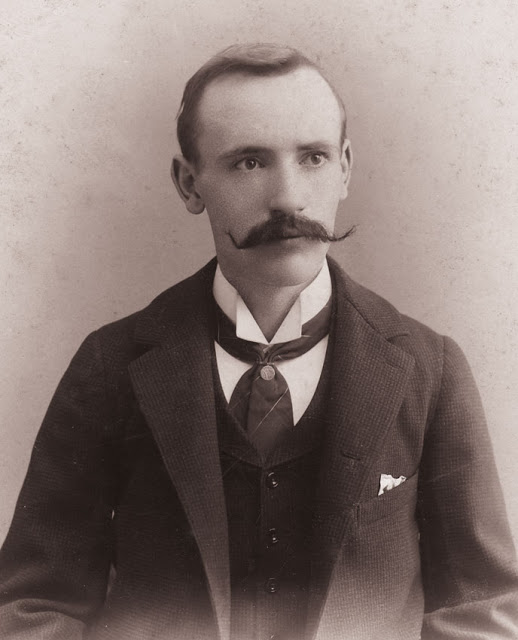
Goodwin died suddenly at the age of 28 and was buried in Ootacamund.

In August 1898 Vivekananda also wrote in tribute:
“With infinite sorrow I learn the sad news of Mr. Goodwin’s departure from this life, the more so as it was terribly sudden and therefore prevented all possibilities of my being at his side at the time of death. The debt of gratitude I owe him can never be repaid, and those who think they have been helped by any thought of mine ought to know that almost every word of it was published through the untiring and most unselfish exertions of Mr. Goodwin. In him I have lost a friend true as steel, a disciple of never-failing devotion, a worker who knew not what tiring was, and the world is less rich by one of those few who are born, as it were, to live only for others.”
In August 1898, Swami Vivekananda wrote the poem Requiescat in pace in memory of Goodwin. The poem began:
Speed forth, O soul! upon thy star-strewn path,
Speed, blissful one, where thought is ever free,
Where time and sense no longer mist the view,
Eternal peace and blessings be on thee!

Oh my gosh Joanna, I can tell through your enthusiastic compilation of his life. Bravo my friend! 😊🙏🏼😍
LikeLike
Thank you, Kym!
Joanna xx
LikeLiked by 1 person
Thanks Joanna for yet another great post for the great man!! Thanks again!!
LikeLike
Thank you, Jyothi, for your kind comment. Greatly appreciated.
Joanna
LikeLiked by 1 person
My pleasure as always Joanna! Hugs and smooches! 😍💞😘💖🥰
LikeLike
What can I say, Joanna. This is a wonderful post about a quite extraordinary man. His message so simple yet so true. It must have been a powerful experience to be in his presence. Thank you for this and I look forward to the next post.
LikeLike
Thank you, Carolyn, for your wonderful comment! Your words are greatly appreciated!
Joanna
LikeLike
I had read and commented on this post earlier also, but Swamiji’s personality was such that one l likes reading him again and again. I did too. One thing I liked about him was that he was also a social reformer. He knew what were the drawbacks of social issues and practices, he was a great critic too, but he never discussed these things abroad, as some people from India are doing now.
Swamiji always talked about harmony and tolerance. A Christian is not to become a Hindu or Buddhist, nor a Hindu or Buddhist to become a Christian, but we should assimilate the spirit of each other, preserving our individuality.
I think we need more practical saints like Swamiji today. Joanna, thank you for talking about him and spreading his teachings through your blog. I appreciate you from the bottom of my heart.
LikeLike
Thank you, Kaushal, for commenting again on my post about my beloved Guru!
As I am tied up with my civil court case, and there are quite a few people who didn’t read my blog two years ago, I decided to use what I have, and judging by the comments today, there is a great interest in this extraordinary man. More interesting details coming in parts 2, 3, and 4. One cannot be bored reading about Swamiji or the extracts from his works.
Thank you, Kaushal, again, your words are deeply appreciated!
Joanna
LikeLiked by 1 person
It’s almost two and half years now. So it’s a good time to reblog. You will notice that many old readers get replaced by new ones. And a topic like Swami Vivekananda is evergreen. It will never be outdated. Wish you all the best for your court case.
LikeLiked by 1 person
Thank you, Kaushal, for your kindness and understanding. My court case, while constantly being delayed, is an acrimonious divorce, and my soon to be ex-husband is not going to be able delaying proceedings forever. We were living apart for several years now as he was verbally abusing, and this is illegal now.
Thank you for your good wishes, your kind words lift my spirit!
Joanna
LikeLiked by 1 person
Really sad, domestic abuse is a crime. My best wishes and regards!
LikeLike
Thank you!
Joanna
LikeLiked by 1 person
Another wonderful post, dear Joanna. You outdid yourself once again with so much history, culture and your great images..
Though I had heard about Swami Vivekananda, I had never had such fascinating and detailed comprehensive information
LikeLike
Thank you, Dear Luisa, for such wonderful comments! Writing about an extraordinary man, it is impossible not to feel the need to provide every detail I could find to prove my point. Guided, I thought, by Swamiji’s spirit, I could not stop after the first post and carried on to four posts and over 12 thousand words. After reading his works, I feel an affinity with his philosophy and follow his guidance.
Thank you, Luisa, again, and your kind words are greatly appreciated.
Joanna
LikeLiked by 1 person
It is I who thank you very much, dear Joanna, also for this wonderful reply ❤️
LikeLike
You are more than welcome, Dear Luisa!
Joanna xxx
LikeLiked by 1 person
🙏💙🙏💙🙏
LikeLike
Wonderful post on Swami Vivekananda, Joanna!! Great effort here!
LikeLike
Thank you, Indira, for your kind comments! It is a pleasure to write about someone as extraordinary as Swamiji!
I am glad that you like it, greatly appreciated.
Joanna
LikeLiked by 1 person
Awesome! Excellent! Highly appreciated. Thank you, Joanna, for bringing such an article. I am amazed. I am very sorry for not reading your valuable posts. Since long, I have not gone through your posts due to various reasons of time management. But today, I have determined to read your posts at first. Actually, I didn’t receive your links or notification of the posts. However, I would like to write some thoughts on Swami Ji.
The article on Swami Ji, is an awe-inspiring masterpiece that seamlessly weaves together suitable media photos, original information, and a remarkable level of thoughtfulness. Its rich and extensive knowledge base captivates readers, drawing them into a world of profound insights and intriguing discoveries. The careful curation of content showcases an exemplary dedication to maintaining originality and delivering a compelling narrative. This remarkable piece stands as a testament to the writer’s skilful craftsmanship and ability to present information in an engaging and interesting manner. Truly a delightful and enlightening read!
Swami Vivekananda: A Global Ambassador of Vedanta and the Four Yogas. I follow his teachings. Complete works of Swami Vivekananda is my knowledge store, where from I get to know about Advaita Vedanta.
LikeLike
Swami Vivekananda, a revered Indian monk and philosopher of the 19th century, played a pivotal role in spreading the profound wisdom of Vedanta beyond the borders of India. His tireless efforts and exceptional intellect led him to introduce the world to the essence of Vedanta through his teachings on the Four Yogas. Among these, Raja Yoga, with its emphasis on meditation and self-discipline, stood as a cornerstone of his message. The profound spiritual insights of Swami Vivekananda are firmly rooted in Advaita Vedanta, the non-dualistic philosophy, which has left a lasting impact on seekers of truth and wisdom across the globe.
Swami Vivekananda’s teachings is a comprehensive path to spiritual realization. Teachings were structured around the Four Yogas, which he considered the four paths to spiritual realization. These yogas are Karma Yoga (the yoga of selfless service), Bhakti Yoga (the yoga of devotion), Raja Yoga (the yoga of meditation and self-discipline), and Jnana Yoga (the yoga of knowledge and wisdom). Through these paths, he believed that every individual, regardless of their background or beliefs, could find a way to connect with the divine and attain self-realization. One must understand on these Yogas.
LikeLike
Swami Vivekananda’s profound teachings are firmly rooted in Advaita Vedanta, which proclaims the unity of the individual soul (Atman) with the ultimate reality (Brahman). This non-dualistic philosophy, attributed to the ancient sage Adi Shankaracharya, posits that the apparent diversity of the world is an illusion, and the true essence of existence is one undivided, eternal, and blissful consciousness.
Swami Vivekananda’s role as a visionary, philosopher, and spiritual leader was unparalleled, as he fearlessly carried the torch of Vedanta to the far corners of the world. His profound teachings on the Four Yogas, with a particular focus on Raja Yoga, continue to be cherished and practiced by countless individuals seeking spiritual growth and self-realization. The essence of Advaita Vedanta, ingrained in his message, acts as a timeless beacon of wisdom, guiding humanity towards the realization of its innate divinity and fostering a harmonious world, united in the pursuit of truth and enlightenment.
🙏🙏🙏👌👍
LikeLike
Dear Joanna,
This beautifully presented article is bound to touch the hearts of countless followers of Swami Ji. Moreover, it serves as an informative gateway for those unfamiliar with his teachings, offering a comprehensive understanding of India’s religious practices. The inclusion of awe-inspiring photos of various Gods and Goddesses enhances the overall appeal of the article, creating a captivating visual experience for readers. Written in eloquent English, this remarkable piece showcases the author’s adeptness at crafting an engaging and enlightening read.
This evening, I am very happy to see your posts with all photos.
Best wishes. Regards.
Arun
LikeLike
Reblogged this on Science-philosophy and commented:
This beautifully presented article is bound to touch the hearts of countless followers of Swami Vivekananda.
LikeLike
I have re-blogged and shared on my Facebook.
Let my followers from India read this and get happiness.
Arun
LikeLike
“Three things are necessary to make every man great, every nation great:
1) Conviction of the powers of goodness
2) Absence of jealousy and suspicion
3) Helping all who are trying to be and do good.”
🙏🙏🙏
LikeLike
Thank you!
Joanna
LikeLiked by 1 person
Dear Arun,
Thank you for your wonderful comments! All the praise is due to Swamiji’s extraordinary presence, I am only the means to present to the world his greatness.
Thank you again, Arun, your words are greatly appreciated!
Joanna
LikeLiked by 1 person
Thank you, Arun, you said all brilliantly, and I have nothing to add, except that parts 2, 3, and 4 will give you more fascinating details.
Joanna
LikeLiked by 1 person
You are always welcome Joanna ☺️
I will read again and again 😀
LikeLike
I believe that.
You have said Swami ji is your Gurudev 🙏
LikeLike
I mean every word, Arun!
Joanna
LikeLiked by 1 person
Thank you!
LikeLiked by 1 person
🙏☺️
LikeLike
Thank you, Arun, for your analytical comment! Greatly appreciated!
Joanna
LikeLiked by 1 person
Thank you, Arun, for your wonderful comments!! I hope you will be able to read all parts of Swami Ji’s biography. The last part number 4 is going to be published the
next Thursday.
Thank you again, Arun, greatly appreciated.
Joanna
LikeLike
You are always welcome Joanna 😊🙏
LikeLike
Thank you!
Joanna
LikeLike
Namaste.
Joanna
LikeLike